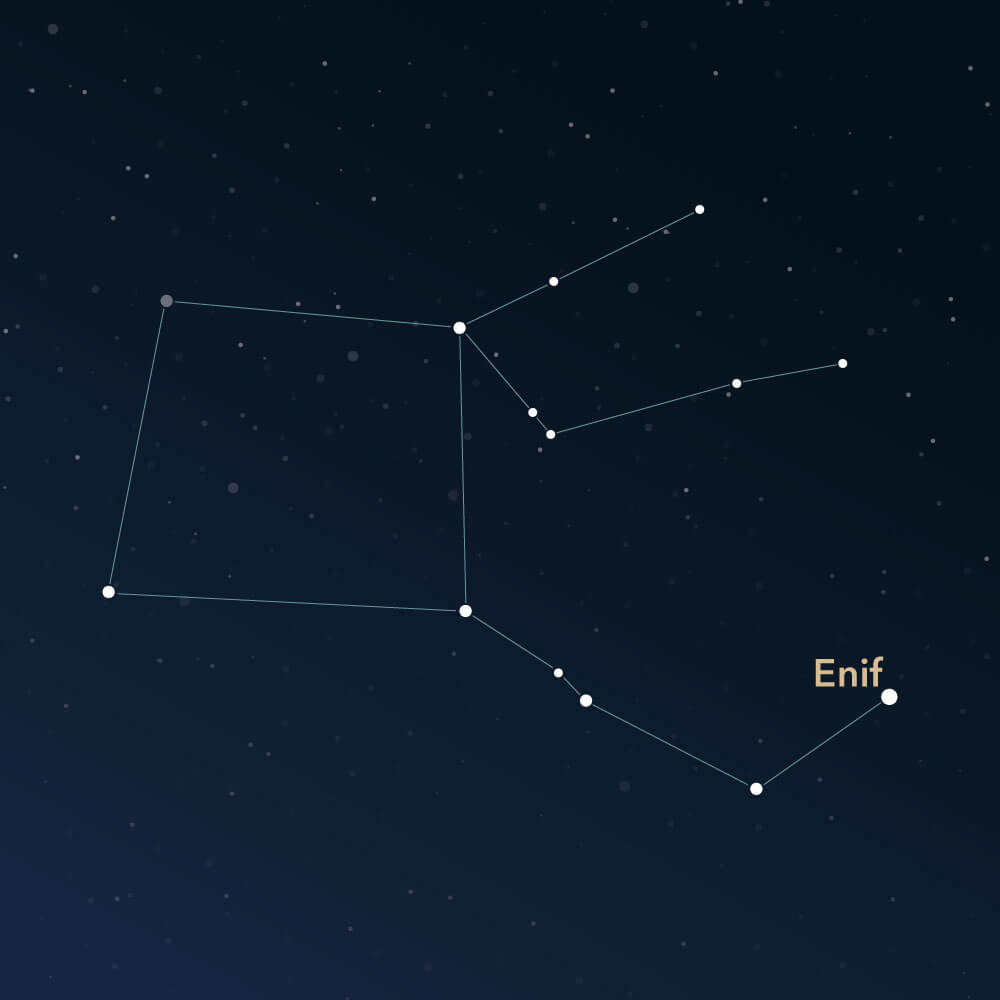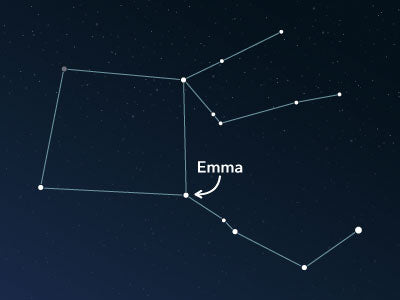The constellation Pegasus
Caractéristiques
- Nom latin
- Pegasus
- Hémisphère
- Hémisphère nord
- Visibilité
- August - May
- Région
- 1121 deg²
- Étoile la plus brillante
- Enif (HIP number 107315)
- Spécialités
- Galaxies, globular clusters

Pegasus represents a winged horse in Greek mythology and is a large constellation near the northern celestial pole. It was already described in antiquity by the Greco-Roman astronomer Claudius Ptolemy. There are several interesting deep-sky objects located in its area.
Hemisphere, visibility, and area
The Pegasus constellation lies in the northern sky, not far from the celestial pole. Due to its location, it is visible from all places in the northern hemisphere, and in many places south of the equator, it can be seen up to the 54th parallel. That corresponds, for example, to the south of Patagonia.
In the northern hemisphere, it can be observed well from August to January, while in southern regions, the months from December to May offer a good view of the constellation.
Pegasus is a very extensive constellation. It covers an area of approximately 1,121 square degrees, making it the seventh-largest constellation in the entire night sky.
In star charts, Pegasus is visualized as a square with additional connections at the corners. The square represents the body of the flying horse, and the lines to the stars on the outside are the head and legs.
The brightest star in the constellation is named Enif (Latin: ε Pegasi, Epsilon Pegasi). It is an orange-red supergiant with an apparent magnitude of roughly 2.4. Its distance is estimated to be around 700 light-years from earth.
Pegasus is surrounded by eight other constellations in the night sky. To the west and north are Andromeda, Lacerta, and Cygnus. To the east are Vulpecula, Delphinus, and Equuleus. To the south and southwest are the two astrological constellations Aquarius and Pisces.
Specialties in the constellation
In the area of Pegasus are various galaxies and a globular cluster.
The globular cluster is named NGC 7078 or Messier 15 (M15). It has an apparent magnitude of around 6.2 and is located at a distance of approximately 33,600 light-years. It can already be observed as a hazy patch in a pair of binoculars, but a telescope is required to resolve individual stars. M15 is northeast of the star Enif.
NGC 7331 is one of the many galaxies in Pegasus. It is a spiral galaxy with an apparent magnitude of approximately 9.5. Its distance from the Milky Way is estimated to be 46 million light-years. The German-British astronomer William Herschel discovered it in September 1784. Observing this galaxy requires a telescope.

Mythology
In Greek mythology, Pegasus sprang from the body of Medusa, the once beautiful young woman who was raped by Poseidon and subsequently transformed into a snake-headed monster. When the hero Perseus put an end to her unworthy life, Pegasus was born. The winged horse flew away and was later captured by Bellerophon, with whom he had many adventures.
Together they defeated the monster Chimera, after which Bellerophon was hailed as the favorite of the gods. However, when he wanted to ascend to the Olympian gods, he incurred the wrath of Zeus. So Zeus sent a horsefly to sting Pegasus.
The horse reared and threw Bellerophon off, who survived the fall to the ground but became blind and paralyzed. Pegasus flew on to Olympus and since then carried Zeus' thunderbolts and thunder.
As a reward for his many heroic deeds, Pegasus was ultimately placed in the sky.
PubliéLire d'autres articles intéressants

An overview of all 88 constellations
Learn more about all 88 constellations and read interesting information about the mythology, visibility, and features.

Application Planétarium
Découvrez le ciel nocturne avec notre application de planétarium !
Disponible pour iOS et Android.

Nommez une étoile dans la constellation Winged Horse
Name a star in a constellation and create something that lasts for eternity.